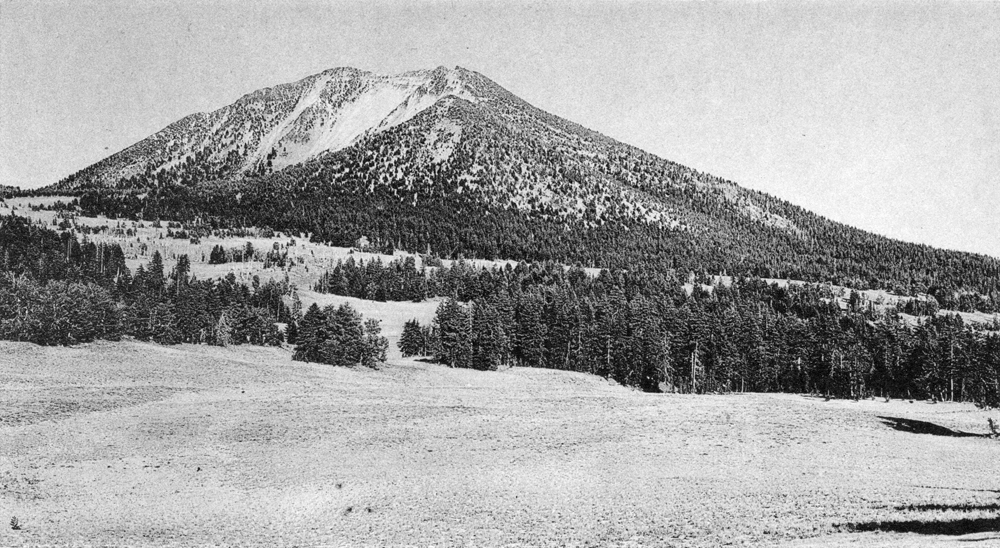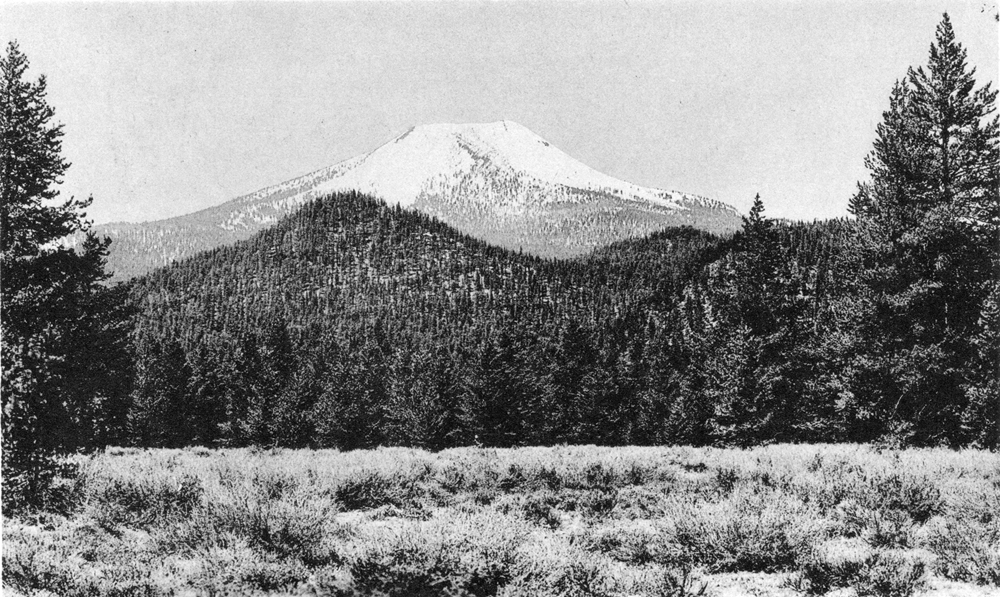The Geology of Crater Lake National Park, OregonWith a reconnaissance of the Cascade Range southward to Mount Shasta by Howell Williams
Mount Scott
DURING the later stages of the growth of Mount Mazama a large parasitic cone developed not far above its eastern base. The remains of this cone form Mount Scott, the highest peak within the park, a landmark visible for tens of miles. Viewed from the east (plate 9, figure 2), Mount Scott still shows the form of a symmetrical truncated cone, but seen from other directions it is markedly asymmetrical, chiefly because much of its northwest side has been destroyed by the development of a large glacial amphitheater (plate 9, figure 1).
|
Plate 9. Fig. 1. Mount Scott from the west, showing the cirque on its northwest side. The vent is concealed beneath talus close to the head of the cirque. The foreground is thickly covered by pumice erupted during the culminating activity of Mount Mazama. (Photograph by George Grant, National Park Service.) |
The first feature that arrests attention is the steepness of the cone. Considering that the slopes are composed almost entirely of lava flows, they are surprisingly steep. The dips of the lavas commonly range between 20° and 30°, and locally they even exceed the larger figure. On the walls of Crater Lake the dips of the lavas are only a third or a quarter as steep.
|
Plate 9. Fig. 2. Mount Scott and parasitic domes, looking west from the Dalles-California highway, From no other angle does the cone of Scott appear so symmetrical (compare figure 1, above). The wooded hills in the middle distance are younger dacite domes. (Photograph by H. B. Taylor.) |
There is no trace of a summit cinder cone on Mount Scott. The attitudes of the lavas show that the vent lies on the wall of the cirque, approximately 1/3 mile west of the summit, where it is concealed beneath the talus. The original limits of the cone can only be guessed at, for all the contacts with the lavas of Mazama are buried by pumice. Certainly none of the lavas exposed on the walls of Crater Lake came from Mount Scott. In that direction, the flows did not spread more than a mile from the vent. In other directions the Mount Scott lavas were able to move farther. Eastward, they pass beneath flows and domes of later dacite.
Mount Scott must have become extinct long before the last explosions of Mount Mazama. Probably it had even ceased to erupt before the dacites of Llao Rock, Cleetwood Cove, and Redcloud escaped from the Northern Arc of Vents. Its growth may therefore have been confined to the Pleistocene period.
The lavas of Mount Scott do not differ materially from the principal flows of Mount Mazama. They are pyroxene andesites rich in phenocrysts of feldspar, and carry plentiful basic inclusions. Some flows are distinctly glassy; others are dull and lithoidal. Interbedded with them are layers of coarse tuff breccia charged with angular blocks, apparently products of low-temperature explosions.
Conspicuous signs of solfataric action may be seen on the western wall of the cirque and bordering the trail near the summit. Here the rocks are thoroughly decomposed, either to masses of milky opal and kaolin or to brownish limonitic aggregates. Locally the lava surfaces are coated with brick-red iron oxides and small patches of specular hematite, and occasional joints and vesicles are lined with tridymite sublimated from acid vapors.
***previous*** — ***next***



